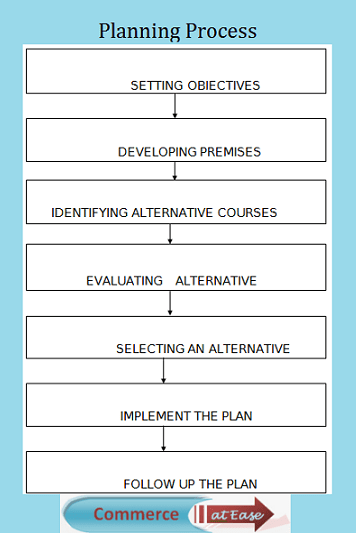Steps in the Process of Planning
1. Establishment of objectives:
The first and foremost step is setting the objectives. Every organization must have certain objectives. Objectives may be set for the entire organization and each department or unit within the organization.
Objectives should be SMART i.e. specific, measurable, attainable, relevant and time bound.
2. Establishment of Planning Premises:
The manager is required to make certain assumptions about the future called premises. Assumptions are the base material upon which plans are to be drawn.
The base material may be in the form of forecasts, existing plans or any past information about policies. All managers involved in planning should be familiar with and using the same assumptions.
3. Identifying alternative courses of action:
There may be many ways to act and achieve objectives. All the alternative courses of action whether routine or innovative, should be identified.
4. Evaluating alternative courses:
The next step is to weigh the pros and cons of each alternative. The positive and negative aspects of each proposal need to be evaluated in the light of the objective to be achieved.
Alternatives are evaluated in the light of their feasibility and consequences like cost, profit, time involved etc.
5. Selecting an alternative:
The best plan has to be adopted and implemented. The ideal plan, would be the most feasible, profitable and with least negative consequences like cost and time.
In such cases, subjectivity and the manager’s experience, judgment and intuition play an important part in selecting the most suitable alternative.
6. Implementation of the plan:
This step is concerned with giving the practical shape to the plan i.e into action , doing what is required.
7. Follow-up action:
This step is concerned with seeing whether plans are being implemented and activities are performed according to schedule and monitoring the plans.
Check Your Understanding

